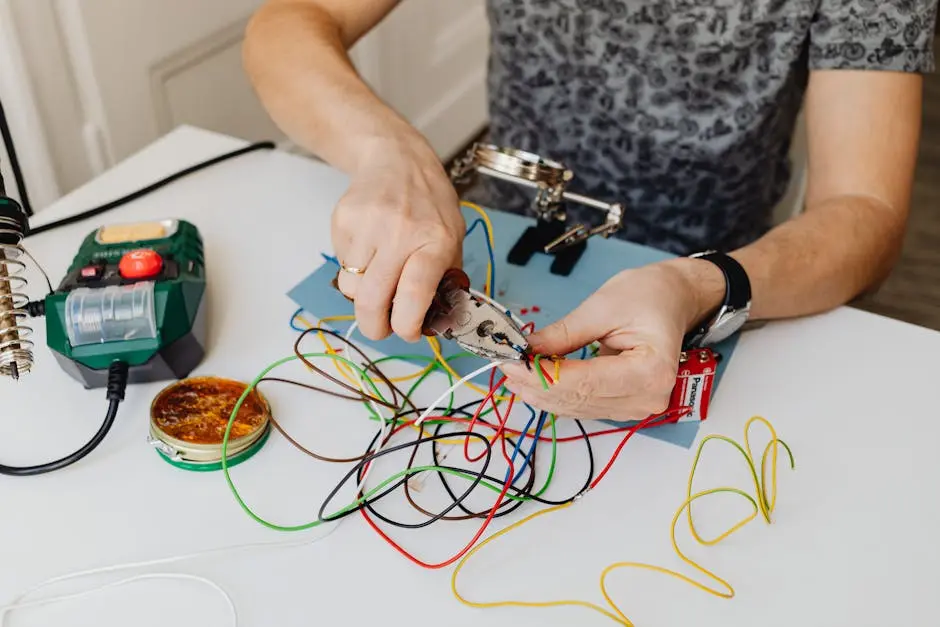
9 Common Mistakes to Avoid When Using Ring Terminals
Share
Using ring terminals might seem straightforward, but there are common mistakes that can compromise your work. Whether you’re a DIY enthusiast or an experienced professional, understanding these pitfalls can save you a lot of time and trouble.
1. Choosing the Wrong Size
Selecting the correct ring terminal size is crucial for ensuring a secure fit. Using a terminal that’s too large or too small can result in poor connections and potential hazards.
Finding the right fit is like finding the perfect shoe. If it’s too tight, you risk damaging the wire, while a loose fit can lead you to unreliable connections. Always refer to the standard sizing charts to determine the best size for your project. When in doubt, seek guidance from experienced technicians to ensure a flawless installation.
2. Incorrect Crimping Technique
Crimping might seem easy, but using the wrong technique can lead to a weak connection. Make sure you’re using the right tools and applying the correct pressure for an effective crimp.
It’s not just about pressure; it’s about precision. Incorrect crimping might appear sufficient, but the results can be catastrophic. The durability of your connections often depends on a well-executed crimp. Professionals suggest investing in quality crimping tools that ensure uniformity and reliability throughout the job. Remember, a solid crimp today can prevent a failure tomorrow.
3. Ignoring Wire Stripping Guidelines
Stripping too much or too little insulation from the wire can affect the terminal’s performance. Follow precise guidelines to ensure only the necessary amount of wire is exposed.
Stripping wires requires a careful touch. Expose too much, and you’ll risk shorts and exposure to elements; too little, and the connection won’t hold. The key is precision. Tools like automatic wire strippers can offer assistance in achieving predictable and repeatable results, ensuring your terminal connections remain impeccable.
4. Overlooking the Importance of Wire Gauge
Matching the ring terminal to the appropriate wire gauge is essential. Mismatched sizes can lead to inefficient connections and possible failures.
Wire gauge isn’t just a number; it’s your assurance for safety and performance. Incompatible gauges can incur higher resistance, causing overheating and eventual failure of the system. Always test the compatibility using an amperage capacity chart and keep a variety of terminals on hand to match different tasks. This way, you’ll have flexibility and adaptability at your fingertips.
5. Neglecting Environmental Factors
Environmental conditions such as humidity and temperature can impact the performance of ring terminals. Choose materials that withstand specific environmental conditions to maintain connection integrity.
Don’t let environmental conditions sneak up on you. Whether it’s the sweltering heat or damp cold, your materials should be equipped to handle the challenge. Consider the use of corrosion-resistant terminals for damp environments and insulated variants for outdoor setups. This foresight can extend the lifespan and reliability of your connections.
6. Using Inadequate Tools
The right tools are critical for optimal ring terminal application. Inadequate or worn-out tools can hinder your ability to achieve a secure connection.
Tool quality directly correlates with connection quality. A dull cutter or misaligned crimper can spell disaster for your projects. Regular maintenance of your tools can mitigate these risks. Consider upgrading to industry-standard equipment, ensuring each terminal is installed with the precision it deserves.
7. Failing to Conduct a Proper Inspection
A quick inspection after installation can catch mistakes. Check for loose connections or improperly seated terminals to ensure everything is in place.
Inspection isn’t just a formality; it’s a necessity. Look for subtle signs of wear or misalignment that might signal trouble. Post-inspection, don’t hesitate to execute a small stress test that verifies the soundness of your connections. This verification step can save costly repairs down the line.
8. Misjudging Load Requirements
Consider the electrical load requirements of your project. Using undersized terminals for high load applications can lead to overheating and failures.
Unknowingly underrating your load requirements can quickly escalate to dangerous levels. Consulting with an expert on ampacity tables can help ascertain the load capacity specific to your condition. This prevents potential failures and maximizes the reliability of your project.
9. Skipping Protective Measures
Protection is vital for long-term performance. Use heat shrink tubing and terminal covers to protect against corrosion and physical damage.
The final touch of a project often lies in its protective measures. Heat shrink tubing or specialized wraps enhance protection against environmental threats. Ensuring these steps post-installation allows for a prolonged terminal life, keeping your connections as robust as the day they were made.

